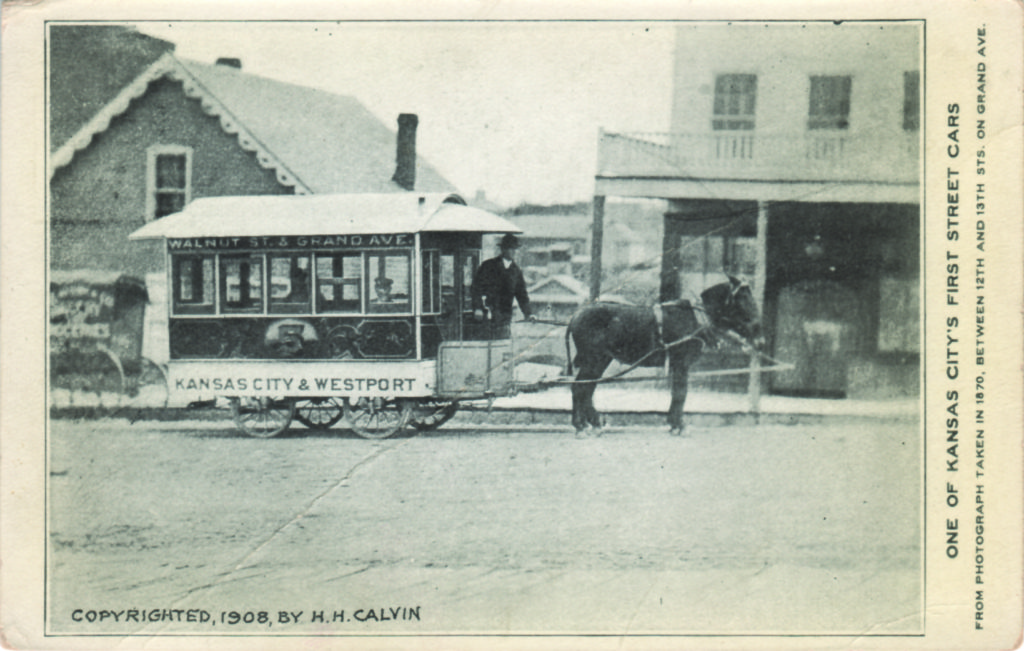by Michael Bushnell
Northeast News
Kansas City’s street railway began humbly in 1869 with the advent of small, animal-drawn cars along rails laid in existing city streets. They were usually drawn by mules, which were more readily available, and the idea was to ferry people between the cities of Kansas City and West Port.
This week’s postcard shows a black-and-white photograph, reproduced from a highly-publicized shot of the West Port Streetcar Line circa 1870, near Fifth and Walnut. At the time, Octave Chanute had just completed the first bridge across the Missouri River north of downtown, thusly securing Kansas City’s position as a major western terminus at the edge of what was then the great American desert. Both Kansas City and West Port were growing rapidly, and land between the two cities skyrocketed in value.
This growth was helped largely by the owners of various street car lines, who often developed their transportation companies and routes in conjunction with residential real estate developments. One of the greatest promoters of this early “light rail” system was Willard Winner, namesake for today’s Winner Road that follows Winner’s original track line from its terminal at 15th and Askew to points east in Independence and Sugar Creek, Mo.
Winner was a partner in the successful amusement park at Mount Washington along the eastern reaches of the Independence Road, too, and is buried in historic Elmwood Cemetery at 15th (Truman Road) and Van Brunt. Another area railroad developer who followed the same idea was Arthur Stilwell, who developed Fairmount Park in what is now Sugar Creek to save his failing Kansas City Suburban Belt Car Line.
Kansas City’s streetcar system floundered through the 1950s as the popularity of the automobile rose along with the federal highway system, and the last car to ply the rails was piloted by Mayor H. Roe Bartle in 1957. This card was never mailed.



















